Tag Archive for: CAR T-Cell
Are Myeloma Therapies Showing Deeper Responses?
Are Myeloma Therapies Showing Deeper Responses? from Patient Empowerment Network on Vimeo.
Are multiple myeloma patients showing deeper responses to therapies? Dr. Sikander Ailawadhi from the Mayo Clinic discusses treatment response and the potential for a myeloma cure.
See More from START HERE Myeloma
Related Programs:
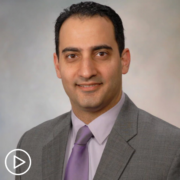
|
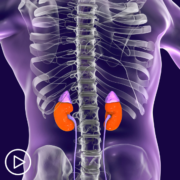
|
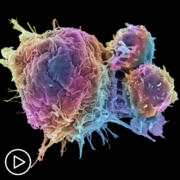
What Treatments Are There for Myeloma Patients Who Relapse After CAR T |
Transcript:
Lisa Hatfield:
And one question comes to mind that I have heard from other myeloma patients, and you mentioned that we are seeing deep responses, or they’re seeing deep responses in clinical trials for some of these in refractory relapsed patients. Do you think that bringing these…do you think it’s possible to bring some of these therapies to the forefront of myeloma care, maybe an induction therapy or after first relapse, and if so, do you think that that could lead to even deeper responses in those patients because their immune system isn’t quite so tired and potentially cure?
Dr. Sikander Ailawadhi:
Again, Lisa, that is such an important and such a spot-on question that you’ve asked because absolutely, you can imagine, if we are thinking of harnessing the body’s immune system, the T cells, but we’re talking about patients who have had five, six, seven, then, prior lines of therapy. But that immune system is also a little exhausted, a little tired, but if you were to use the immune system of a newly diagnosed patient, patient who’s not been created that much…well, those T cells are going to be way more robust.
Whether we use a CAR-T kind of strategy where we remove the T cells, train them and put them back, or we use a bispecific kind of strategy where we put in a drug that pulls the T cells closer to the myeloma cells and kills them using these smart thoughtful strategies which are not just dumb drugs that go in and kill everything, these are smart targeted drugs, using them early on in the treatment paradigm will certainly be more beneficial.
In fact, there is some data showing up where some of these strategies like CAR-T cell are being used sooner in the treatment paradigm. But again, as drug development goes, We first want to make sure it is safe, it is effective, and typically the starting point is patients who have exhausted other options, but very soon we will be seeing all of these strategies, and in fact, some of these strategies combined with each other coming in, early lines of therapy and hopefully providing excellent, deep responses, and you mentioned that term that has been very invasive for us cure, I don’t know if we are…
So we are not there yet. I don’t know how long it’ll take us to get there, but there is certainly much more hope today for getting to that cure than it was before.
Expert Perspective: COVID Vaccines and Treatment for Myeloma Patients
Expert Perspective: COVID Vaccines and Treatment for Myeloma Patients from Patient Empowerment Network on Vimeo.
Myeloma expert Dr. Irene Ghobrial shares an update on COVID vaccines, treatment, and advice for myeloma patients on how to help protect themselves from the virus.
Dr. Irene Ghobrial is Director of the Clinical Investigator Research Program at Dana-Farber Cancer Institute and Professor of Medicine at Harvard Medical School. Learn more about Dr. Ghobrial.
Related Programs:
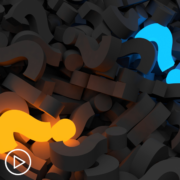
Understanding MGUS & Smoldering Myeloma: What’s the Difference? |
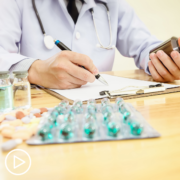
|

|
Transcript:
Katherine Banwell:
Many prominent doctors claim the COVID vaccines suppress the immune system. How can boosters be justified in an already immune deficient myeloma patient?
Dr. Irene Ghobrial:
Yes, so we think that protecting yourself and preventing COVID infections is so essential and so important.
Especially in a patient with myeloma and especially when you’re receiving therapy: daratumumab (Darzalex), bispecifics, CAR-T. We want to make sure everyone is protected from COVID infections, and they are real. They are serious, and they cause death in our patients. So, every step, not only getting the vaccine but also sometimes we give tixagevimab co-packaged with cilgavimab (Evusheld) to protect our patients and protect further problems and reinfection.
Katherine Banwell:
Remind us, what that is, the Evusheld?
Dr. Irene Ghobrial:
Oh. It’s an antibody to help us prevent the COVID infection, so as a prevention method rather than as a treatment method.
The other thing that we think of is the immune system is already altered in myeloma. It’s even altered or changed even as early as MGUS and smoldering myeloma. So, when we’re walking around and thinking, “Oh, I have only a benign design of MGUS,” that’s not true. The immune system has already started to change as early as MGUS, and in many of us as we get older.
So, we have to be more protective and we have to be more careful with our patients. But as we get to even myeloma, before we even treat it, before we use the drugs that kill plasma cells, good and bad plasma cells, which secrete antibodies that fight infections, we are already at risk for COVID infections.
And then our drugs, unfortunately, don’t only kill the malignant or the bad plasma cells, they also have a small side effect of killing also your normal plasma cells, and these are the ones that make antibodies to fight infections. So, you are at risk, and you have to be very protective and careful with yourself.
What Are the Risks of CAR T-Cell Therapy?
What Are the Risks of CAR T-Cell Therapy? from Patient Empowerment Network on Vimeo.
Dr. Melissa Alsina, a myeloma expert from Moffitt Cancer Center, reviews the potential side effects of CAR T-cell therapy for myeloma patients, and discusses how these side effects may be managed.
Dr. Melissa Alsina is an associate professor of medicine in the Blood and Marrow Transplant Program at Moffitt Cancer Center in Tampa, Florida where she also serves as head of the Multiple Myeloma Transplant Program. Learn more about Dr. Alsina, here.
See More from Innovative Myeloma Therapies
Related Resources:

|
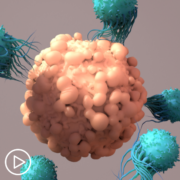
How Is CAR T-Cell Therapy Changing the Myeloma Treatment Landscape? |
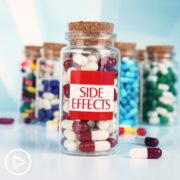
|
Transcript:
Katherine:
What are the risks of CAR T-cell therapy?
Dr. Alsina:
So, in myeloma, it is, in general, pretty safe. There are two main – well, actually, I would say three main side effects that we can see with CAR-T. Number one is called cytokine release syndrome, and we are getting these cells from the patient’s immune systems, sending them a lab to be manufactured so that they can recognize this protein, BCMA, in the myeloma cells.
And then, those cells are grown, so essentially, what we’re doing is that we’re taking the immune system of the patient, and we’re making it very specific against the myeloma cell. And then we’re growing it, so we’re making a hyperactive immune system, and then giving it back to the patient. And then, those cells, they are going to go ahead and react against the myeloma cells and start killing the myeloma cells, and in doing that, that reaction, that immune reaction will elicit release of a lot of proteins – cytokines – and that can cause side effects.
When that happens, that is called cytokine release syndrome, and the most common finding with that is a fever. Patients can have a high fever. And then, it varies depending on the CAR-T that the patients are getting. So, for example, with this Abecma, usually, the reaction happens right away after you get the cells – the next day, so that’s why these patients, we admit them to the hospital because we know that this cytokine release syndrome is going to happen right away.
And, it could be just a fever. In the majority of the patients, it happens like this, is just a fever, but it may be about 20 percent of the patients, that reaction can be more severe, and it could be a fever with low blood pressure or shortness of breath, and it could be a fatal complication, but that’s very, very rare.
And we know – we can identify, obviously, when it’s happening, and there’s a medication that we can give to actually sort of counteract that reaction and don’t let it progress, and in the majority of the patients, that works quite well.
Katherine:
What other side effects are there for CAR T-cell therapy?
Dr. Alsina:
Yeah, so besides the main one that I discussed, cytokine release syndrome, the other thing that could happen is neurotoxicity, meaning that T cells can actually cross to the brain and cause toxicity in the brain, and depending on the type of CAR-T that the patient is getting, it could be less or more risk.
But essentially, what could happen is that the patient could have some aphasia, like for example, difficulty finding words. It could also be just a headache. Patients could have seizures, so we do give the patients medication to prevent seizures while they are undergoing CAR-T.
They can have difficulty writing, so we make every patient write a sentence every day to make sure that’s not being affected. And we do a mini mental status every day. Every day, we’ll go see the patient and ask them 10 different questions, like “Where are you? What day is it? Who’s the president?”, we show them an object, and so on so we can monitor these things very closely. If we see any changes, then we can intervene. Usually, for neurotoxicity, we give steroids.
The good news, though, is that this is very rare. With Abecma, it’s very rare that a patient would have severe neurotoxicity. With ciltacabtagene autoleucel (Carvykti), which is the one that was approved more recently, from 100 patients that were treated, there were five patients that had this delayed neurotoxicity, some of them with movement disorders, like Parkinson’s-like systems, and these were delayed. These didn’t happen in the first few weeks.
But we learned what are the risks associated with these, the majority of the patients that have very high tumor burden, so what we do is that we monitor the patients very closely, especially the patients with high tumor burden. The ideal situation is that we can control the disease a little bit better before taking them to CAR-T, but even when that’s not possible, what we do is that we intervene early on if we see that these patients are getting any side effects and being more aggressive with the intervention.
And then, the third, more important side effect is these CAR-T cells can prevent blood counts to recover. For CAR-T, we give chemotherapy.
That would allow the T cells to expand, and this chemotherapy can drop the blood counts, but usually, they recover quickly, but in some patients, this recovery doesn’t happen quickly, and patients can have low counts for months, and obviously, that would bring increased risk of infection.
So, that is a potential complication, especially in patients that have received a lot of prior therapies, and it’s not common that a patient would take a long time, but it could happen, and sometimes, occasionally, we’ve had to give these patients a stem cell boost from stem cells that we have stored to actually make their counts recover. So, those are essentially the three most common complications, but in general, it’s a treatment that is well tolerated and very manageable, and I can tell you the majority of the patients that I’ve treated, they’ve said this is easier than a transplant.
How Is CAR T-Cell Therapy Changing the Myeloma Treatment Landscape?
How Is CAR T-Cell Therapy Changing the Myeloma Treatment Landscape? from Patient Empowerment Network on Vimeo.
Myeloma expert Dr. Melissa Alsina discusses the evolution of myeloma treatment over the past several years, including an explanation of the two FDA-approved CAR T-cell therapies available for myeloma patients.
Dr. Melissa Alsina is an associate professor of medicine in the Blood and Marrow Transplant Program at Moffitt Cancer Center in Tampa, Florida where she also serves as head of the Multiple Myeloma Transplant Program. Learn more about Dr. Alsina, here.
See More from Innovative Myeloma Therapies
Related Resources:
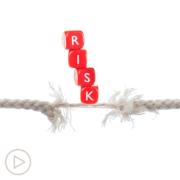
|

Is It Too Late for a Myeloma Second Opinion? |

|
Transcript:
Katherine:
I’d like to start by talking about innovations in myeloma therapy. How have treatment options for myeloma evolved over the past several years?
Dr. Alsina:
Yeah, well, the easy answer to that is dramatically. It’s really amazing, the number of advances that we’ve had in the treatment. When I think 20 to 25 years ago, we had two drugs for myeloma, rare opportunity to get any patient in complete remission.
And now, we have many, many drugs, we continue to have bone marrow transplants, now we have CAR-T cellular immunotherapies, and able to get patients – over 80 percent of the patients in remission up front, and even in the relapse setting, many of them with CAR-T, for example. One of the CAR-Ts is able to get 80 percent of the patients in remission, so it’s really incredible, the amount of advances.
Katherine:
Yeah. How is CAR T-cell therapy changing the field?
Dr. Alsina:
So, we – probably everyone knows that there have been two CAR-T products approved for myeloma in the past year. We’re not doing as good as the lymphoma group. Those were the first CAR-T cells, were approved for lymphoma/leukemia, and for those patients with lymphoma and leukemia, there’s an opportunity for a cure, whereas in myeloma, in the setting that we’re using CAR-T right now, which is for patients that have failed multiple lines of therapy, at least four prior lines of therapy, those patients are not cured.
Katherine:
Yeah. You mentioned that there are two CAR T-cell therapies available right now for myeloma patients. What are they?
Dr. Alsina:
So, the first one, that was approved in March of last year the commercial name is Abecma. This is made by a company that is called BMS. It targets BCMA, which is B-cell maturation antigen, which is the protein that is preferentially expressed in the myeloma cells, so it’s a really good target for myeloma, and this is the one that studies show that we get response rates at about 75 to 80 percent with remission rates about 40 percent, and in the real world, since Abecma was approved, we’ve treated many patients – at Moffitt, actually, I think we have the largest number in the whole United States, close to 60 patients, and we’re seeing the same.
So, really, when we translate that to the real world, we’re seeing the same results, and I would argue that perhaps better because the patients that go on trial are very selective patients – they need to have good counts, they cannot have renal insufficiency, all this different criteria, and actually, when we looked at it, we found that 71 percent of the patients that we treated in the real world with Abecma would not have been eligible for trial, but yet, we’re getting the same results – the same results in terms of efficacy and the same results in terms of safety.
Katherine:
What is the second CAR T-cell therapy available?
Dr. Alsina:
The second CAR-T was approved just recently, in February of this year, and that is cilta-cel. The commercial name for this is Carvykti, and this one, we do not have a lot of real-world experience because the manufacture and availability of the product is still very limited, so we only have been able to do two patients per month with Carvykti. However, the studies show this agent to be extremely effective, with response rates close to 100 percent and a complete remission rate of 80 percent, which is…
Katherine:
That’s phenomenal.
Dr. Alsina:
Right? It’s phenomenal for this patient population. So, we’re definitely very excited with this. I think a major issue with CAR-T that you may or may not have heard – I’m pretty sure all the patients are aware of this, but it’s the availability. When these products are approved, because these products have to be manufactured from the patient cells, the companies cannot release – cannot meet the demand, so there are a lot more patients that need CAR-T than product availability.
So, we have a waiting list, and this is true for all centers. With the first product, with ide-cel/Abecma, now, at least, in our center, we have been able to catch up a little bit. We’re getting about eight slots per month, so it’s a significant amount. We still are not able to offer it to every single patient that needs it at the moment, but we’re doing much better than the beginning.
As I mentioned before, with Carvykti, it’s still a significant challenge, and again, we’re getting maybe one or two slots per month. Talking with these companies, they expect that is going to improve by early next year, so we’re keeping our fingers crossed because right now – and this is true for us and many myeloma centers – we have over 100 patients in the waiting list.
But in any case, even with that, I would encourage any patient that needs CAR-T to go to a center because even though we have a long list, for example, some of those patients that are on the list, they don’t need CAR-T right now, so it doesn’t mean that 120 patients on the list need CAR-T at the moment. So, we normally would go down the list according to when we saw the patient, and then the needs of the patient at the moment that we have a slot, and that’s how we make our selection.
So, the ideal situation is the patient seeks a CAR-T consult early on. Don’t wait until you have failed four therapies to go. When you start your third line of therapy, go, because then you get on the list. By the time you really need it and are eligible to get it, then it might be accessible to you.
Considering Joining a Myeloma Clinical Trial? Questions to Ask Your Healthcare Team.
Considering Joining a Myeloma Clinical Trial? Questions to Ask Your Healthcare Team. from Patient Empowerment Network on Vimeo.
Considering participation in a clinical trial can bring up a lot of questions. Myeloma expert Dr. Melissa Alsina shares advice and key questions patients should ask their healthcare team before joining a myeloma clinical trial.
Dr. Melissa Alsina is an associate professor of medicine in the Blood and Marrow Transplant Program at Moffitt Cancer Center in Tampa, Florida where she also serves as head of the Multiple Myeloma Transplant Program. Learn more about Dr. Alsina, here.
See More from Myeloma Clinical Trials 201
Related Programs:

Understanding the Role of Clinical Trials As a Myeloma Treatment Option |

|

Myeloma Treatment & Research Updates From 2022 ASCO and EHA Meetings |
Transcript:
Katherine:
When a patient is considering participating in a clinical trial, what sorts of questions should they ask their healthcare team?
Dr. Alsina:
I think the number one thing is “How can this help me? What is the potential for this treatment?” The other very important thing is “What are the potential side effects? Has this been done before in other patients? Do you have any experience? What do you think are going to be the side effects or additional risk compared to getting the standard of care?”
And then, I think the third thing is “How much commitment do you need from me?” Because there is no doubt that clinical trials require a lot of commitment. When we are doing a clinical trial, we, for example, have to give all the drugs in the center, usually. Let’s say I’m testing Revlimid (lenalidomide), Velcade (bortezomib), and dexamethasone (Decadron) followed by CAR-T, for example in patients with high-risk myeloma. That’s one of the studies.
Yeah, you could get Revlimid, Velcade, and dexamethasone anywhere. Those are approved drugs. But if you are participating in a clinical trial, you have to get it at Moffitt or at the center, which means patients traveling back and forth, so that is very important because it requires a lot of commitment from the patients. And I think, on that line also, you can ask as a patient, “Well, what are the resources there in the clinical trial that can help me make that commitment?”
Frequently, clinical trials help patients by paying for their transportation, their gas, their accommodations if they have to stay overnight, to be able to comply and meet all those different visits.
Understanding the Role of Clinical Trials As a Myeloma Treatment Option
Understanding the Role of Clinical Trials As a Myeloma Treatment Option from Patient Empowerment Network on Vimeo.
When it comes to myeloma treatment options, where do clinical trials fit in? Dr. Melissa Alsina of Moffitt Cancer Center discusses the role of clinical trials in a myeloma treatment plan at every stage of a patient’s care.
Dr. Melissa Alsina is an associate professor of medicine in the Blood and Marrow Transplant Program at Moffitt Cancer Center in Tampa, Florida where she also serves as head of the Multiple Myeloma Transplant Program. Learn more about Dr. Alsina, here.
See More from Myeloma Clinical Trials 201
Related Programs:

Considering Joining a Myeloma Clinical Trial? Questions to Ask Your Healthcare Team. |

|

Myeloma Treatment & Research Updates From 2022 ASCO and EHA Meetings |
Transcript:
Katherine:
When it comes to myeloma treatment options, where do clinical trials fit in?
Dr. Alsina:
They fit everywhere, essentially. They fit everywhere because myeloma – even though we have many, many advances, it’s a disease that we cannot cure, so there’s still a lot, a lot of work to do, so we have trials for newly diagnosed patients, improving what we do at newly diagnosed, bringing in some of those therapies, for example, like CAR-T up front, and then we have trials for early relapse/late relapse, because again, yeah, we’ve done a lot and we feel very encouraged by that, but we’re short because we have not been able to cure myeloma.
So, it’s super important, and it’s super important that patients reach out to myeloma centers to see what is available for them because participating in a clinical trial, number one, gives a patient a unique opportunity to get something more than standard of care, something that might make their response better or their survival better.
That’s one thing, and the other thing is the only way we’re able to move the field forward is doing clinical trials and having patients participating in clinical trials, and the reason today I can sit here and tell you that the treatment of myeloma has evolved dramatically in the last 20 years, and now we have these responses that are amazing that were unheard of, is thanks to the many patients that have participated in clinical trials.
Without that, obviously, we would not be here with these results. But that needs to continue. I think we cannot rest because there are still patients that die from myeloma. We cannot lose the perspective that this is still an incurable disease and there’s still a lot of work to do, and the only way to get there is to continue doing the research.
Katherine:
It sounds like clinical trials are also available for patients who have already been treated with another therapy. Is that right?
Dr. Alsina:
Absolutely. Clinical trials are available for all the different stages of the disease – when you are newly diagnosed, when you have your first relapse, when you have your second relapse.
Katherine:
Anytime through the process.
Dr. Alsina:
Anytime, anytime, and there are clinical trials – the clinical trials not only help us test new drugs or new combinations of drugs, but it also helped us understand the disease better. The majority of clinical trials, we do what we call correlative studies, where we get a sample of the patient, the bone marrow of the patient, for example, before and after therapy, and we see what are the changes that we see there and what are the genes that dictate that response or lack of response.
So, clinical trials not only help us improve outcomes in patients, but it also helps us understand the disease better that leads to other new therapies and other clinical advances. This can translate into new clinical advances.
Understanding MRD and What It Means for Myeloma Patients
Understanding MRD and What It Means for Myeloma Patients from Patient Empowerment Network on Vimeo.
Myeloma expert Dr. Melissa Alsina, of Moffitt Cancer Center, provides an explanation of minimal residual disease (MRD) and how she uses MRD in patient care.
Dr. Melissa Alsina is an associate professor of medicine in the Blood and Marrow Transplant Program at Moffitt Cancer Center in Tampa, Florida where she also serves as head of the Multiple Myeloma Transplant Program. Learn more about Dr. Alsina, here.
Related Programs:

|

|

|
Transcript:
Katherine:
What is MRD, and what does it mean for patients?
Dr. Alsina:
So, MRD stands for minimal residual disease. So, it means that if a patient is in complete remission, what it would mean is that I don’t see any myeloma cells in the bone marrow and I don’t see an M spike. The M-spike is zero in the blood and in the urine, and the light chains are fine.
But even with that, there maybe be some disease that is residual that I can’t see by conventional methods, so there’s two methods that have been developed that are able to detect one cancer cell in a million cells.
Katherine:
Wow.
Dr. Alsina:
So, if I have a patient that is in complete remission, I can use one of those methods to look, and that will tell me if the patient still has minimal residual disease or not.
So, the reason why it is important is because there are many studies that have shown that if I can get a patient to be minimal-residual-disease-negative, no evidence of disease by those two tests – that I can explain a little bit more if you want – then those patients are going to do better, their response is going to last longer, and the patients are going to live longer.
So, nowadays, with our better treatments, we use also that as a goal. We say okay, I not only want to get a patient in a complete remission, I want to get that patient to MRD negativity.
And we do adjust our therapy to get there. As an example, I can do a transplant in a patient, and three months after transplant, I look at that minimal residual disease. If it’s negative, then I do Revlimid (lenalidomide) maintenance, which would be standard of care. If it’s positive, I use two drugs to try to get that patient to that MRD-negativity level, and there are many studies right now looking at how to adjust our treatment based on response.
How Do Test Results Impact Myeloma Treatment Options?
How Do Test Results Impact Myeloma Treatment Options? from Patient Empowerment Network on Vimeo.
Myeloma expert Dr. Melissa Alsina reviews the test results that are taken into consideration when choosing a treatment approach for patients.
Dr. Melissa Alsina is an associate professor of medicine in the Blood and Marrow Transplant Program at Moffitt Cancer Center in Tampa, Florida where she also serves as head of the Multiple Myeloma Transplant Program. Learn more about Dr. Alsina, here.
Related Programs:

|

|

|
Transcript:
Katherine:
We know that patients undergo testing when diagnosed. How do test results affect treatment choices?
Dr. Alsina:
So, in general, we do a bone marrow, we check for the genetics of the myeloma cells, see what are the genes that are affected in the myeloma cells, and that helps us define myeloma as high-risk or standard-risk, and that can help us decide what treatment we want to give these patients. Unfortunately, it’s not totally well defined.
I wish we could use that in a better way and there are drugs that could really target, but there is some information. We know, for example, that proteasome inhibitors are important for patients with high-risk myeloma, so we definitely try to include that in a patient that is high-risk, and the other thing is that patients that are high-risk, it’s even more important to get to that remission, so we’re going to push treatment to get there, treat these patients a little bit more aggressively.
Other than that, depending on, for example, what are the blood counts – some patients have a lot of bone marrow involvement and their blood counts are very low. This is not common, but it happens, and so, when that happens, we might be more aggressive up front and give these patients more aggressive chemotherapy to clean the bone marrow before changing them to the more normal therapies because the treatments that we give, like Revlimid (lenalidomide), Velcade (bortezomib), Darzalex (daratumumab) can depress the counts, right?
So we’re in that battle. The patients already have low counts, we give the treatment, the treatment lowers the counts further, so it’s hard to give these treatments in these settings. And then, the third thing that we take into account is kidneys. About 25 percent of the patients will have renal insufficiency when they are diagnosed. Some of these drugs, particularly the immunomodulatory drugs like the Revlimid are metabolizing the kidneys, so it’s very hard to dose these drugs when the patients have renal insufficiency.
So sometimes, for these patients, we avoid the IMiDs up front. We give a different combination until the disease gets better, and then we introduce the IMiDs. We think these immunomodulatory drugs like Revlimid are super important in the treatment of myeloma, so we want to give them, but sometimes we have to delay starting them until the patient’s kidney function improves.
CLL Treatment Approaches: What Are the Types?
CLL Treatment Approaches: What Are the Types? from Patient Empowerment Network on Vimeo.
What treatment options are there for CLL patients? Dr. Catherine Coombs explains the types of CLL approaches available and who they may be appropriate for.
Dr. Catherine Coombs is an Assistant Professor of Medicine in the Division of Hematology at The UNC Lineberger Comprehensive Cancer Center. Learn more about Dr. Coombs here.
Related Resources:

|

|
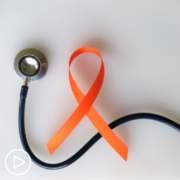
|
Transcript:
Katherine:
Let’s walk through the types of treatments that are used today to treat CLL.
Dr. Coombs:
So, for the non-watch-and-wait category, that means we are now thinking about therapy. Most of the time that involves a targeted agent.
We largely are using a lot less in the way of cytotoxic chemotherapy. Not to say there isn’t a role for it, but in my own practice, it’s not something that I have been using in the past several years because it’s highly toxic. It is effective, but it can lead to some long-term toxicities. And it’s also not quite as effective as these new targeted agents. So, those fall into two major classes.
The first class is a class of drugs called BTK inhibitors. That stands for Bruton’s tyrosine kinase. That’s an important target in the CLL cells, specifically. The CLL cells are a type of B cell. So, BTK is important for the signaling of both normal and cancerous B cells. When we use drugs to block that protein, that impairs the CLL cells’ ability to multiply. Then we ultimately are able to control the disease with prolonged administration of one of these drugs.
There are two FDA-approved BTK inhibitors. The first FDA-approved agent is a drug called ibrutinib (Imbruvica). And then the newer agent is called acalabrutinib (Calquence). There’s another drug that you may have heard of called zanubrutinib (Brukinsa). That is not technically yet FDA-approved for CLL, but it is occasionally used given that it is FDA-approved for other lymphomas, and it is within the national cancer center network guidelines for CLL treatment.
The big benefit of these drugs is they work phenomenally well at controlling the CLL. I would say the major downside is that they do have to be taken indefinitely. So, patients ask, “Am I going to be on it forever?” Well, it depends on what you mean by forever. We generally keep patients on these drugs as long as number one, they’re tolerating them, so no bad side effects, and then number two, as long as the CLL is staying under control.
So, for that 85-year-old patient that I gave as an example, forever may be until the rest of their life. Because they can work for six, seven, eight plus years; so, they’re highly effective. Some patients may go on them and then die from something else years down the road. For the younger patients, or patients who progress faster, we would then put them on something else whenever the drug stopped working, provided that they didn’t have a significant side effect to the drug class. So, that’s a big first class.
The second large subset of therapies is a drug called venetoclax (Venclexta), which we typically combine with an anti-CD20 drug. The one that we use for patients who are getting their first treatment is called obinutuzumab (Gazyva). Venetoclax is a BCL-2 inhibitor that inhibits this pathway within CLL cells. It’s not unique to CLL cells, but the CLL cells are particularly dependent upon it called apoptosis.
So, when they get exposed to this drug, the CLL cells just die; they can’t continue living, they die off. So, venetoclax works really exquisitely well at killing off CLL cells. Probably works better when it’s paired with this drug obinutuzumab. That’s how it was approved in the frontline setting: those two drugs together. The big risk of that therapy, essentially, it’s kind of a weird risk, when the CLL cells die too quickly that can cause some problems in the human body because one has to metabolize all the debris left over from these dead cancer cells. The medical term we use for that is tumor lysis syndrome.
That can actually be fatal if not done in a safe way. Fortunately, when we do it as per the recommendations by the manufacturer, we’ve not had any adverse severe problems from it. It ends up being that the patient has to come in weekly every five weeks to do a slow ramp-up of the drug to kind of slowly kill off the cancer cells so that the body isn’t overwhelmed by the contents of these dead cancer cells.
The big advantage of this regimen is that because it kills the CLL so well, people can get into very deep remissions. So, instead of being a therapy that people are on indefinitely, it’s designed as a one-year therapy when given as the first therapy. So, it’s one year and then they’re done. People after that are in remission, they’re not on any treatment. They may feel like they don’t have CLL.
Most of the time the CLL does come back. It depends on does the patient come back for something else? Which does happen when people are older. But it appears that it keeps people in remission for several years. The median, which is how long it takes for half of patients to have their disease come back, the median progression for survival has not yet been reached for the trial that was done using this therapy.
So, that’s at least three, four plus years that we’ve been able to follow people. So, very attractive in that you’re done, and then you just wait for the disease to come back but largely feel good in the interim.
How Is Relapsed/Refractory DLBCL Treated?
How Is Relapsed/Refractory DLBCL Treated? from Patient Empowerment Network on Vimeo.
What options are available if a diffuse large B-cell lymphoma (DLBCL) patient doesn’t respond to treatment or relapses? Dr. Justin Kline discusses potential next steps in treatment for DLBCL patients with relapsed or refractory disease.
Dr. Justin Kline is the Director of the Lymphoma Program at the University of Chicago Medicine. Learn more about Dr. Kline, here.
See More From The Pro-Active DLBCL Patient Toolkit
Related Programs:
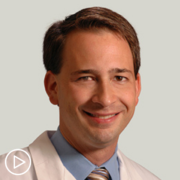
|
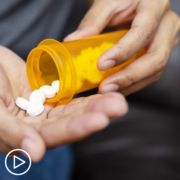
|
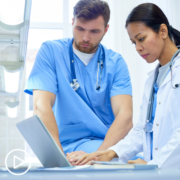
|
Transcript:
Katherine:
Let’s talk about if someone doesn’t respond to initial treatment or they relapse. Let’s start by defining some terms for the audience. What does it mean to be refractory?
Dr. Kline:
So, refractory is a term that’s used to describe a situation where a person has received treatment but that treatment hasn’t worked as well as we have expected. And the most – probably the most important scenario is after initial treatment.
Most people, for example, who receive R-CHOP, somewhere between 80 and 85 percent will have a completely negative PET scan after treatment. That’s remission. If the PET scan is not negative and you do a biopsy and it shows that there’s still lymphoma there, that’s what’s called primary refractory. In other words, the person’s lymphoma was refractory to initial or primary treatment. And in clinical trials that are testing agents, drugs or immunotherapies in folks who’ve had multiple treatments, usually refractory is used to define someone who has either not responded or has had a very, very short response to whatever the last treatment they had was.
Katherine:
How does relapse then differ from refractory?
Dr. Kline:
So, right, so relapse suggests that the lymphoma at some point was in a remission, right?
And so for example, a person gets six treatments of R-CHOP, has a PET scan at the end, the PET scan is clean. We say you’re in remission. Eight months later, the person develops a newly enlarged lymph node, and a biopsy shows that the lymphoma has come back, right? That’s what we would call a relapse. There was a period of remission, whereas refractory usually means there was never a period of remission to begin with.
Katherine:
Got it. How typical is it for a patient to relapse?
Dr. Kline:
Well, again, if you look at all comers, if you treated 100 people with DLBCL, most, probably 70 to 75 percent, would go into remission. About 10 or 15 percent would have primary refractory disease and another 10 or 15 percent would have a remission that would end at some point and they would have a relapse. So, it’s not terribly common.
The problem is that once the lymphoma has either demonstrated that it’s refractory to treatment or it’s come back, it’s relapsed, it’s a little bit more difficult to cure the lymphoma at that point.
Katherine:
How are patients treated then if they’ve relapsed or refractory?
Dr. Kline:
Well, so for somebody who’s had primary refractory lymphoma or has a lymphoma that’s relapsed after initial therapy, again, say for the sake of argument with R-CHOP, for many, many years, the next line of treatment if you will was to administer what we call salvage chemotherapy, and this is different chemotherapy from the original R-CHOP, that’s meant to put the lymphoma back into remission. In other worse, to salvage a remission. And for folks whose lymphomas were sensitive or responded, shrunk down to that salvage chemotherapy, we would consolidate that remission.
We would make it deeper using high dose chemotherapy and an autologous or a cell, stem cell transplant. And that’s been the standard of care for younger patients for decades.
That paradigm has been challenged, particularly in refractory patients or those who have very early relapses after R-CHOP, by two important clinical trials that have demonstrated superiority of a type of immunotherapy, a cellular immunotherapy called CAR T-cell therapy, which seems to be more effective even than stem cell transplantation in that population of folks.
Waldenström Macroglobulinemia Treatment Decisions: What’s Right for You?
Waldenström Macroglobulinemia Treatment Decisions: What’s Right for You? from Patient Empowerment Network on Vimeo.
What determines the best Waldenström macroglobulinemia treatment for YOU? In this 30-minute webinar, Dr. Jorge Castillo reviews key factors that affect treatment decisions, emerging treatment research, and shares tips for partnering with your healthcare team.
Dr. Jorge Castillo is Clinical Director at the Bing Center for Waldenström Macroglobulinemia Dana-Farber Cancer Institute and Assistant Professor of Medicine at Harvard Medical School. Learn more about Dr. Castillo, here.
See More From The Pro-Active Waldenström Macroglobulinemia Patient Toolkit
Related Programs:
Transcript:
Katherine:
Hello, and welcome. I’m Katherine Banwell, your host for today’s webinar. In this program, we’re going to help you learn more about Waldenstrom macroglobulinemia, what it is, and how it’s treated, and we’ll share tools to help you work with your healthcare team to access the best care.
Before we get into the discussion, please remember that this program is not a substitute for seeking medical advice. Please refer to your healthcare team about what might be best for you. Joining us today is Dr. Jorge Castillo. Dr. Castillo, welcome. Would you please introduce yourself?
Dr. Castillo:
Yes, hi. Thank you, Katherine. My name is Jorge Castillo. I’m the clinical director of the Waldenstrom’s Program at the Dana Farber Cancer Institute in Boston.
Katherine:
Excellent. Thank you for taking the time to join us today.
Dr. Castillo:
Happy to be here.
Katherine:
Before we get into the discussion, I’m sure this has been on the minds of many patients. Is the COVID vaccine safe and effective for Waldenstrom’s patients?
Dr. Castillo:
Yeah, that’s a great question. I think the short answer is yes. We have a number of studies that not only our center but other centers in the United States and Europe have been doing. And we have seen that patients with Waldenstrom’s do benefit from the administration of the COVID vaccine.
Katherine:
Excellent. Let’s start with the very basic. What is Waldenstrom macroglobulinemia?
Dr. Castillo:
Yeah, Waldenstrom’s macro – it’s a mouthful.
Katherine:
It is.
Dr. Castillo:
I can just call it WM for ease.
It is a blood cancer, and in this blood cancer, the malignant cells are nesting in the bone marrow. And not only that. These malignant cells kind of secrete, produce, a protein called IgM.
IgM is an antibody that should be protecting us from infections, and in a normal state, we all have a little bit of IgM, and that’s a good thing. But in these patients, with these malignant cells, as these cells accumulate in the marrow, they actually increase the levels of IgM in our patients, and that can translate into a number of different symptoms, which we will probably talk about later.
Katherine:
Yes. How is it staged?
Dr. Castillo:
So, the staging is a very interesting aspect. So, when we think about cancer, we think about stage I is in one spot, stage II in another spot, stage III, right, and it gets more extensive as we go along. That doesn’t really apply to Waldenstrom’s. Waldenstrom’s is a whole-body disease right from the start. The main reason for that is because it’s a disease of the bone marrow, and we all have bone marrow in all our bones, from our skull all the way to the great toe, so if you were to get a sample from each bone space, we would find the malignant cells there. So, this is a disease that is a whole-body disease right from the start, so therefore, there’s no stage I, II, or III. That is just the way we envision this.
Katherine:
How does the condition progress?
Dr. Castillo:
So, it’s interesting because a number of the patients that we see in my clinic are actually asymptomatic at the time of the presentation. I would say maybe about a third of the patients I see in my clinic that were diagnosed with this disease for other reasons. They either had an abnormal laboratory value or an abnormal imaging study or some other reason. And when they come, they are worked up. Initially, they are found to have these malignant cells and these IgM elevation, but they have no other problems whatsoever.
So, I would say most patients will be asymptomatic at the beginning of the disease, and probably they will be asymptomatic for years before the symptoms actually do start. So, what happens is the malignant cells start taking over the bone marrow space, and it reaches a point in which the bone marrow, the healthy bone marrow, doesn’t have space to produce the normal cells that they should produce.
So, the first things that we tend to see in these patients is anemia, so the hemoglobin level starts dropping.
The red cells are the first ones that are being affected by this process so that the anemia is being seen first. If we leave that for a long time, then the other blood cells will decrease also, the white blood cells and the platelets over time. But the first one is almost always the anemia. And obviously, that, patients feel tired. They feel short of breath. They feel fatigued and all of that.
Now, the IgM itself can cause other problems on their own. If they have there’s too much IgM, they can actually make the blood a little thick, and that can cause a little bit of problems with the circulation, specifically in the eyes, for example. Some patients have blurred vision. Some patients have nosebleeds or headaches, right, with all that hyperviscosity, which means the blood is too thick. In some other patients, we have nerve damage. You know, they can have numbness in their toes, and then that increases into the – progresses, extends into the feet, into the shins, into the knees and then the fingers.
And so, that happens over years sometimes. Some patients can have enlargement of lymph nodes in their necks and in the axillary areas or in the inguinal areas, or even enlargement of organs, the spleen and liver and things like that. So, when we think about the clinical manifestations of Waldenstrom’s, it varies, very diverse. But I would say most patients would have anemia. I think that’s probably the most important aspect of it.
Katherine:
Thank you for that. That’s really helpful. So, now that we know more about Waldenstrom’s and how it progresses, let’s turn to treatment. Help us understand when it’s time to treat. Certain patients, as you said, don’t really need treatment right away because they’re asymptomatic. So, which patient type should begin to get treatment?
Dr. Castillo:
That’s really the most important aspect of the discussion, I would say, because from my perspective – you know, I’ve been doing this for almost a decade, seeing probably 3,000, 4,000 patients with Waldenstrom’s in my career, I think one of the most important decisions is when to treat.
A number of our patients will be asymptomatic, and they will remain asymptomatic for years. So, really, treatment initiation in this scenario is not reasonable. Number one, we don’t cure the disease. Number two, patient have a long survival. I’m talking about 15, 20 years of survival in a large proportion of patients. So, a treatment that is going to last a year is not going to change a 20-year survival, so we don’t extend the survival of our patients in most cases.
Katherine:
Right. If a patient has been on watch and wait, how do you know when it’s time to begin therapy?
Dr. Castillo:
Yeah, so essentially, when we see patients in whom we decide to monitor, right, watch and wait, which is monitor them, we follow them over time, and we see them sometimes every three months or every six months, and we get bloodwork.
We do bloodwork on those patients to look at the hemoglobin, just to see if there’s anemia or not, to look at the IgM to see if it gets too high or not. And if the IgM is too high, sometimes, we’ll have the patients have eye examinations on a yearly basis to make sure that there’s no changes in the vessels in the back of their eyes, in their retinas. That’s an indication of hyperviscosity. And every time we see them, not only do we look at the numbers, which I think is important, but we also look at the symptoms.
So, I classically ask my patients, “How’s your energy level, how well you’re doing, still able to do everything you want to do? Any numbness in your feet? Right? Any nosebleeds, any headaches, any blurred vision, right? Any lumps? So, I just go over this list of different symptoms that patients can experience. Are you having fevers? Are you having night sweats? Are you losing weight for no reason? Right? So, it’s a monitoring process.
Just to clarify further, for example, a patient can come to see me with anemia, and I know that Waldenstrom’s causes anemia, as I said before. But it is my duty as a doctor to make sure that there’s no other reason why the patient might be anemic. So, even though in the scenario, which is very likely that the disease is causing this problem, I still need to make sure that it is not something else driving this anemia for the patient, and then the anemia is severe enough. You know, some patients say, “Yeah, I’m a little tired, but I’m still able to do everything I want to do.”
So, really that’s a very minor process. And there are people who tell me, “You know what, I cannot play with my children anymore, right, because I’m so tired,” then that’s a different process. So, the severity of the symptom and how related to the disease it is, that combination is what really tells us who needs to be treated or not.
So, what I would say in terms of treatment timing for Waldenstrom’s patients, it’s not that you need treatment and then you don’t need it, and then you need it. It’s not like that. It’s more like you don’t need it; you don’t need it; and then it is reasonable to treat. And there is a period in which it’s reasonable to treat, and that period can last sometimes months to years. Some patients can decide to be treated a little earlier in the process with less symptoms. And some patients can decide to be treated a little bit later with more symptoms.
So, it has to do a lot with the patients, how they feel, how they’re tolerating the symptoms, how dangerous or potentially threatening those symptoms are. And that’s a conversation that it needs to take place between the doctor and the patient, understanding the patient’s preferences.
Katherine:
Yeah. Yeah. What are the treatment goals for Waldenstrom’s?
Dr. Castillo:
So, as I said earlier, we don’t cure patients with Waldenstrom’s. Patients live with Waldenstrom’s, and I said before as well, for many years.
So, I think the goal of the treatment is to get back the patient – to get the patient back to how they were feeling before they became symptomatic. If the patient is not able to play with their children, as I said before, getting them back to play with their children again and have that energy. Or if they’re having all these lumps popping up in their bodies, kind of reduce the size of those lumps. Or if they’re having the neuropathy, have an improvement on the nerve ending damage and the numbness that they’re experiencing. If they’re having nosebleeds and headaches, resolve those symptoms.
So, in many other cancers, we think about complete remissions, cures, and that’s what we need to do. And we need to induce responses in our patients, and our treatments do induce responses in our patients, and responses are measured by IgM levels improvements and hemoglobin improvements and things like that, which is great to have the numbers improve, but I think it’s key to actually control the patient’s symptoms as well.
And I think it’s – from my perspective as a patient, if I were a patient, that would put it more important to me. So, what about my hemoglobin going from 10 to 13 if I’m not feeling better? So, I think feeling better is a very important aspect of what we do here.
Katherine:
Yeah, absolutely. Can you walk us through the currently available treatment approaches for WM?
Dr. Castillo:
Oh, there’s plenty. And that is actually a good message. So, there are many treatment options, and the treatment options are almost equally effective. So, I think we can separate the treatment options in big groups. I think that the big group, the first group that we use, treatments that are very effective, is chemotherapy-based. And we have a number of chemotherapy options that we use routinely for patients with Waldenstrom’s. We typically combine chemotherapy with an antibody called rituximab. And that rituximab is used universally for a lot of different blood cancers out there.
And so, when we combine the chemotherapy with the rituximab, I would say probably 90 to 95 percent of patients that get treated do feel better. Not only their numbers improve, but also the symptoms improve, the treatments. These treatments are typically given intravenously, and they are typically given for about six months of treatments. It’s very easy to tolerate.
I mean, it’s not the classic chemotherapy that we think about with other cancers, right? Losing your hair and vomiting and being very sick. That is not what happens with these chemos. They are very gentle chemos. But the fact that they are gentle doesn’t mean that they do not work. I mean, they are very effective against the disease, but they are more gentle in terms of the side effects. Some other side effects that I think are important with chemo specifically is the small risk of developing another bone marrow disease, and that’s because of how chemo works. It also damages a little bit the good cells, and that can cause other problems, and the risk of infections.
I think nowadays, in the context of the pandemic, I think the risk of infections is something that we need to really talk about a lot with our patients. But these typically are six-month treatments, intravenous treatments, and then done with treatments and very effective regimens. Then, we have the non-chemo treatments, which is you have a lot of those, development of those therapies over the years.
We do have a group of medications called proteasome inhibitors, or PIs. And we borrow those from the myeloma group.
Myeloma is another blood cancer that shares some similarities with Waldenstrom’s, so we use some of those treatments into our treatments. And these are non-chemotherapy agents. We also combine them with rituximab to make them more powerful.
And some of them are intravenous. Some of them are injected under the skin. Some of them are pills. And again, six months of treatments, very nicely tolerated, very effective. I’m talking about 90, 95 percent efficacy rate. And the side effects with this are more like nerve ending damage or more like lung, heart problems, not really secondary malignancies, but infections is also an issue here too.
And then, we have the most – the newer treatments that are the pill form treatment. We call them BTK inhibitors, B as in Boy, T as in Tom, K, BTK inhibitors.
We use that for many other diseases as well, but we use them for Waldenstrom’s too. And we use them alone in most scenarios. Sometimes, we can combine them with rituximab, but the large experience is without rituximab. So, it’s just the pill. Nothing else. No injections or infusions. No risk of secondary bone marrow disease. No risk of neuropathy. But they are pills that you have to take every day, indefinitely.
So, in contrast with the other six-month treatments, duration treatments, these are treatments that tend to last for several years. And we do have some taking these pills sometimes for six, seven, eight years, and they continue on them because they do well, and their response is as good as chemotherapy. But it’s just with a pill that you need to take every day.
Now, these pills have a different set of side effects, and that includes sometimes some irregular heartbeats, some bleeding and bruising. We have a new pill just that we published on recently, a medication called venetoclax, with a V. Again, it’s a different mechanism of action. It’s a BCL-2 inhibitor. It doesn’t have any risk of arrhythmia or bleeding, but it can cause some issues with infections.
But maybe you can take two years of this treatment and not take it indefinitely. So, all these are treatments that we keep advancing, and we will continue running studies with new medications that hopefully have similar or higher efficacy with a better side effect profile.
Now, just to finalize, the last option that should always be in the mind of a patient is clinical trials, investigational agents that are not sometimes – some of them are approved already by the FDA.
Sometimes they’re not. But they are agents that either in the laboratory or in prior experience suggest that they might have efficacy on these patients.
And that’s another treatment option that could be considered in some scenarios.
Katherine:
Okay, excellent. Efficacy and many factors coming into play, obviously, when making a treatment decision. How do you decide which treatment is appropriate for a particular patient?
Dr. Castillo:
Yeah, that’s a million-dollar question. And the reason that is the case is because when we think about other types of cancers, right, breast cancer and lung cancer, we do have these large studies with thousands of patients in which half of the group got one treatment; the other half got the other treatment. And we know that one treatment is better than other in this context of a randomized, large study. We don’t have a lot of that in Waldenstrom’s because it’s a rare disease. So, most of the studies that we do have are studies in which we have maybe 30, 40, 50 patients, 100 if we’re lucky, so comparisons between all these different treatments have not been done.
So, the chemotherapy, for example, versus the PI, there’s no study comparing that. The chemotherapy versus the BTK inhibitors, there’s no study comparing that. So, based on that, since there’s no comparison, we need to kind of understand the profile of the drug, you know. And you need to match that with the patient’s preferences.
So, we need to look at the patient’s age. We need to look at the patient’s comorbidities. We need to look at the patient’s medications that they’re on. Are their insurance going to cover the pills or not? Are they comfortable with getting intravenous infusions? What is the risk of leukemia versus the risk of neuropathy in those patients? So, we need to look at so many factors. Interestingly enough, efficacy is not the problem. We don’t choose treatments based on efficacy because all of the treatments are almost equally effective. We actually choose treatments based on patients’ preferences. We choose treatment based on the medication side effects.
And the newer thing is actually, we’re doing genomic profile in the patients. We’re actually seeing which mutations the patients have, and there are some treatments that work better or worse with specific mutations, so we kind of tailor a treatment option based on all those factors.
So, it’s not an easy job, but I think it’s rewarding to understand that the best treatment for a patient with Waldenstrom’s is a personalized treatment. And as long as –
Katherine:
That’s what it sounds like.
Dr. Castillo:
And as long as the patient understands the best he or she can in terms of the pros and cons of the treatment before going in, an educated decision, I think that’s probably best choice, yeah.
Katherine:
Are there test results that can impact options?
Dr. Castillo:
I would say so. So, for example, in patients who have very high IgM levels, we try to avoid giving rituximab alone, for example, because rituximab can also make the IgM go up in about 40 to 50 percent of the cases, and patients can become more symptomatic if they were symptomatic because of the IgM in the first place.
So, that’s one value that we follow carefully. Sometimes, the kidney function can tell us if there are some chemotherapies that cannot be given with a kidney function that is not normal or close to normal, for example. And again, there are some mutations that can help us understand if a treatment might work better than other treatments too.
So, yeah, there’s a lot of shades of gray in there to be able to pick and choose. And again, the patient’s symptoms are important. I mean, if a patient, for example, already has an arrhythmia, I’m going to try to avoid a medication that can cause more arrhythmias. If a patient has already some nerve damage, I’m less likely to recommend a treatment that can cause more nerve damage. So, yeah, there’s a lot of room there for personalization.
Katherine:
Yeah. You’ve mentioned existing conditions. So, how do patients’ specific factors like lifestyle and age and other preexisting conditions impact treatment choices?
Dr. Castillo:
Well, I think the way that affects it is just because patients who are older age tend to have other problems, you know. And I think having that in mind is important. So, if somebody has a liver dysfunction of some kind, then that will modify my treatment options. And as I said earlier, if someone has a kidney disfunction of some kind or depending on the degree, I can choose a different type of treatment there.
Now, also, we need to be mindful, for example, if somebody’s not so reliable on taking pills because they cannot remember or they don’t know, they are not organized enough or they don’t – you know. So, there are so many other factors playing into that role – maybe a pill form treatment might not be the best option, you know.
If somebody doesn’t have help to transfer him to take him to the infusion room back and forth, maybe an infusion treatment might not be the best there. So, again, another series of factors could be taken into account when making treatment decisions.
Katherine:
There’s obviously so much to consider when choosing therapy. What do you feel is the patient’s role in treatment decisions?
Dr. Castillo:
From my perspective, the patient’s role is very important. I need, as a physician, that the patient feels that it’s part of the team here. So, when patients come to see me, I strongly encourage patients to bring as many people as they want with them. If they want somebody on FaceTime at the same time, I’m happy with that too. And that helps because the amount of data that we provide, the amount of information that we provide, is a lot in terms of quantity. But sometimes, it’s not easy to understand when you just hear it one time, right?
So, having somebody taking notes, having somebody else taking notes, having somebody else listening, somebody else asking questions, and then somebody else explaining back to the patient – the patient is looking for the best for them, but if he’s also affected by the whole process. It would be naïve to feel – or to think – that somebody was told they have an incurable blood cancer, and they are completely paying attention to everything you’re saying, after you said something like that.
So, I think it’s important for patients to be there with family, friends, or whoever wants to be there to help out. I think that’s a really important aspect. Then, number two is you need to know about your own disease. And I am fortunate to work with a group of patients who are highly educated, to the point that they get to know more about their disease than their own doctor. And I think that’s key. I think that’s important. For me, that is not threatening or challenging. I think that is actually a good thing.
And that way, I can have a more direct conversation, meaningful, because I understand that the patient is understanding what I am saying, and we are trying to speak the same language, so I think that is key also. So, bottom line, I think education from the patient perspective, involvement of their care, I think that’s key so they can be their own best advocates.
There is going to be a lot of – since it’s a rare disease, there’s going to be a lot of backs and forths with different physicians. Some physicians are going to be more intensive and trying to treat when the patient doesn’t need to be treated. The opposite is also true in which a patient, they do need treatment, and the physicians are saying, “No, we can wait a little bit longer.” And again, that has nothing to do with the quality of the doctor. It’s just the fact that the disease is rare, and to keep up with it is very difficult. So, the patient being their best advocate is actually a very important role that they should have.
Katherine:
Knowledge is power.
Dr. Castillo:
That’s right.
Katherine:
How is treatment effectiveness monitored? How do you know if it’s working?
Dr. Castillo:
Yeah, so a couple of ways, right? We have the formal way and the informal way. So, the formal way to measure a response is, I mentioned before, the IgM. All right? So, the IgM levels, we use the IgM levels and how they decline over time on treatments to measure the response of the patients. So, based on the IgM decrease, we can actually classify the patients’ response in different depths.
So, we have minor responses, which is 25 to 50 percent decrease in the IgM, and then we have a partial response, which is a 50-90 percent decrease in the IgM, and then we have a very good partial response, which is a 90 percent decrease of the IgM or normalization of the IgM. So, it all depends. So, if your IgM let’s say, is 3,000, right, you will not be in a partial response unless your IgM is below 1,500, and you will not be on a very good response unless your IgM is below 300, for example. And that might be different for somebody who starts with an IgM of 10,000, and that might be different for somebody who start with an IgM of 500, right?
So, that’s the formal response criteria that we use, IgM-based. Having said that, we also have other factors in terms of the quality of life of the patient. So, we can see improvements in hemoglobin levels. We can actually see normalization of hemoglobin, even though the response to the IgM is minor. Right, you say “minor”, and I mean, how great that is?
But if the hemoglobin goes from 8 to 15 on a minor response, I think that patient is doing very well, right? So, we need to have those two hand-in-hand to understand what the benefit of the patient is seeing. If the patient is having hyperviscosity symptoms, for example, and the IgM was 6,000 and went down to 4,000, that’s enough for the patient to be without hyperviscosity symptoms. Then that’s a successful treatment too. So, we need to balance all that out and make sure that we understand it very well. So, yeah, we do have the formal IgM responses, but we do have the physical quality of life response that we should also pay attention to.
Katherine:
Fatigue seems to be very common among Waldenstrom’s patients. Here’s a question that we received before the program. Kasey asks, “Why do I feel so tired all the time? Is there anything that can be done about it?
Dr. Castillo:
That’s a great question, and as I said before and basically kind of summarizing what I put together, I mean, there are many patients why a symptom with Waldenstrom’s could be fatigued. One of them is they could be anemic. The other one, they could have some hyperviscosity symptoms causing some fatigue, maybe some inflammation in the body because of the Waldenstrom’s, but maybe there are other reasons why patients can be fatigued.
And if you go out there in the streets and you start asking people, “Are you tired?” 80 percent of Americans are going to be tired. I’m not trying to minimize the symptoms of the patients. What I’m trying to say is we need to be very careful at understanding what the relation of the fatigue is with the disease. We need to be convinced that there is a relation there.
If that happened in my clinic – for example, a patient comes to see me, and they are fatigued; their hemoglobin is 14, which is normal; their IgM is about 1,000, which is not supposed to cause hyperviscosity. So, I do not know really in that context if the Waldenstrom’s is driving the fatigue or not.
Katherine:
Or if it’s something else.
Dr. Castillo:
Exactly. So, we need to make sure that the patient doesn’t have any iron deficiency, that the patient doesn’t have any thyroid problems, that the testosterone problems are okay, that there’s no sleep disturbances, that there’s no depression. So, there’s so many different other things that we need to make sure are not there before we mount into that. Because if someone is fatigued with a hemoglobin of 8, which is very low, with my treatments, if I make that 8 14, I know the fatigue is going to get better. But if the patient is fatigued with a hemoglobin of 14, which I am not going to improve with my treatments, then how confident do I feel that I’m going to improve the patient’s quality of life with a potentially dangerous treatment?
So, we talked about already secondary leukemias, neuropathy, other problems that the patient can have with the treatments or because of the treatments.
So, we need to balance that out and understand that the potential benefit has to be higher than the potential risk, and that’s why the personalization comes into play. So, fatigue is a big issue, and we try to take a very systematic approach about that, you know, ruling out other conditions, making sure that we understand its relation with the disease before recommending treatment just for fatigue.
Katherine:
Yeah. This is one side effect that is so important for patients to share with their healthcare team, right?
Dr. Castillo:
Oh, absolutely.
Katherine:
So that their healthcare team can know how to treat them.
Dr. Castillo:
That’s right. And again, there are so many interventions that are not medications that could be done in these type of situations, right? Meditation, mindfulness. There are so many other approaches to try to help in these type of situations, changing a little bit sometimes the perspective, trying to be a little bit more on the positive thinking, right?
So, there are so many different ways outside of pharmacological approaches that we can use to try to improve our patients’ quality of life.
Katherine:
Yeah. Knowing that one has an incurable disease can be very stressful, right? Knowing that you have to live with this.
Dr. Castillo:
That’s absolutely correct, and again, what I’ve seen happening in some of my patients is every little thing that happens to them, they do not know if it’s because of the disease or not.
Katherine:
Oh, yeah.
Dr. Castillo:
“So, I have a twitch there. Oh, it’s due to Waldenstrom’s. Do I need to be treated because of that twitch?” And that, I understand it. Well, I try to understand it. I’m not in that same situation, so I cannot understand it completely. But I try to understand how if you don’t trust your body anymore, right? I mean, you have a disease, and you don’t trust your body anymore, then how you trust all these little symptoms here and there?
So, in my conversations with my patients, I discuss these things openly and that you’re going to have a lot of different symptoms here and there. Most of them probably are not going to be related to the disease, but if some of them are concerning enough to you in terms of your activities, in terms of eating, drinking, sleeping, social life, sexual life, you know, working life, then let me know, and then we will be happy to investigate those because anything can happen to anybody.
So, you can have other problems. Waldenstrom’s doesn’t protect you from anything, so, and it’s always important to discuss this with patients and pay attention to the patients, not dismiss their symptoms, think about them with them, talk about them with the patients to try to understand how these are affecting them.
Katherine:
Dr. Castillo, are there emerging approaches for treating Waldenstrom’s?
Dr. Castillo:
Always. And that’s the beauty – that’s the second part of when we talked about clinical trials, right, we talked about clinical trials? Science continues, and we work very closely with an organization called the International Waldenstrom’s Foundation, and they support research all over the world for Waldenstrom’s.
So, their message is since the sun comes up until the sun comes down, there is someone, somewhere in the world working on Waldenstrom’s, and that’s true.
So, there’s a lot of science in the background, and that science helps us understand how the Waldenstrom’s cells behave, and therefore, we can then start targeting some things. That’s how BTK inhibitors came out. That’s how proteasome inhibitors came out. That’s how BCL-2 inhibitors came out. All these are the result of science, applied into the treatments. So, at my institution and many other institutions in the country and outside of the country, there are newer treatments being tried all the time.
We have now – we are looking into combining BTK inhibitors with other agents. Germany is doing a number of different studies. Canada is doing a number of different studies. We are doing some studies in the United States as well, combining chemotherapy and PIs with the BTK inhibitors. We’re doing a study in my institution combining BTK inhibitors with BCL-2 inhibitors. So, and the idea is to try to create a more powerful agent or regimen and hopefully maybe not give patients indefinite treatments, more like fixed duration treatments.
So, I think that’s where it’s coming. It’s coming maybe double, triple combinations, fixed duration treatments. That’s what is coming in terms of that aspect of the research. And then, we do have newer compounds coming out.
We do have now some concepts in what we call immunotherapy, right? We think about antibodies.
We think about bispecific T-cell engagers. CAR-T cells, so all that is actually up and coming in Waldenstrom’s. There are actual clinical trials being done today evaluating all those different treatments for patients with Waldenstrom’s.
So, I think the future is really bright. I’m really optimistic, to be honest with you about the treatment of patients with Waldenstrom’s. Obviously, what we need, what we want, is cure of the disease. And again, we can think about cure in two different ways. We can think about the classic definition of cure in which we treat patients, the disease goes away, you stop treatments, and the disease never comes back, right? That’s one way of looking at cure.
The other way of looking at cure is you treat the disease, the disease is in a remission, you continue treating the patient, and then the patient basically dies of other reasons, right? That is a functional cure. So, I think we’re closer to the latter, much more than the former, but the efforts to continue developing new treatments, it’s not stopping anytime soon.
Katherine:
No, because we’re always constantly moving forward, having to find new treatments, definitely. Well, Dr. Castillo, thank you so much for taking the time to join us today.
Dr. Castillo:
It has been my pleasure. I mean, I always enjoy the opportunity to be able to communicate with patients about what I love doing.
Katherine:
Yeah. Thank you, and again, thank you to all of our partners.
To learn more about Waldenstrom macroglobulinemia and to access tools to help you become a proactive patient, visit powerfulpatients.org. I’m Katherine Banwell. Thanks for being with us today.
An Expert’s Take on Promising Myeloma Treatment and Research
An Expert’s Take on Promising Myeloma Treatment and Research from Patient Empowerment Network on Vimeo.
Myeloma research is advancing quickly. Dr. Joshua Richter, a myeloma expert, shares his excitement about emerging treatments in development.
Dr. Joshua Richter is director of Multiple Myeloma at the Blavatnik Family – Chelsea Medical Center at Mount Sinai. He also serves as Assistant Professor of Medicine in The Tisch Cancer Institute, Division of Hematology and Medical Oncology. Learn more about Dr. Richter, here.
Related Programs:

|

Myeloma Treatment: When Should a Clinical Trial Be Considered? |

|
Transcript:
Katherine:
When it comes to myeloma research and emerging treatment options, what are you most excited about, specifically?
Dr. Richter:
So, I think the big thing that I’m excited about from myeloma that we’re on the cusp of is T-cell engagers and T-cell based therapies. And, essentially, we all have T cells in our body, and T cells are a part of our immune system. They attack bacteria, viruses, and cancer.
And one of the best cancer fighters that exists is our own immune system. And the old way of treating cancer and blood cancers like myeloma was just to give medicines that suppressed all of the immune system, the good and the bad. Now, we’re trying to be more precise, and there’s certain parts of the immune system that we don’t want down, we want up. So, they help attack the cancer.
And the two biggest technologies are something called CAR T and something called bispecific antibodies. CAR T stands for chimeric antigen receptor T cells.
And, basically, what that is is we collect your T cells, we engineer them in the lab to rev them up and target the cancer. And we can put them back into you and they attack the cancer, very exciting. And then we have something called a bispecific antibody that has two arms. And as we infuse this medicine into you, one arm grabs onto the cancer cell, the other arm grabs onto your T cell and makes that T cell activate and attack the cancer cell.
And a lot of these drugs are in clinical trials as well. So, we’re very excited about moving from, you know, just lowering everything, the good and the bad, to being more precise and saying, no, no, no. There are some cells that we want way, way up.
Katherine:
Right. Right. So, you’re – you’re being much more specific now.
Dr. Richter:
Mm-hmm.






